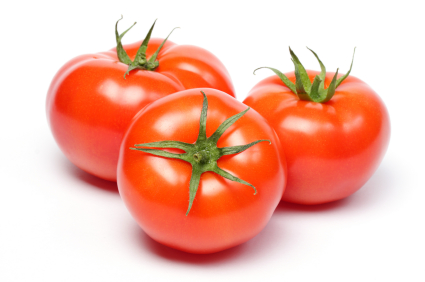
My Little Thumb
Tomato
(Solanum lycopersicum)
Tomato is considered a hardy cool-weather vegetable and can be planted in either the early spring or fall. Available in numerous varieties and shades, cabbage is abundant in vitamins C and E, beta-carotene and fiber. One of the keys to planting cabbage is to ensure the plants have slow, uninterrupted growth. Once you arm yourself with these tips on how to plant cabbage, you can be well on your way to enjoying the delicious vegetable.
| Recommended Bag | : | Large |
|---|---|---|
| Life Time | : | 7 Weeks |
| Seed | : | 15 per bag |
| Nutrients | : | Calories( 10% ), Carbohydrates( 10% ), Energy( 10% ), Fat( 10% ), Nitrates( 10% ), Other Vitamins( 10% ), Potassium ( 10% ), Protein( 10% ), Sodium( 10% ) |
| Fertilizers & Pesticides | : | Granular triple superphosphate, Phosphorus, Potassium, Potassium chloride, Urea, |
| Varieties | : | Valencia , Big Beef , Green Zebra , Black Cherry , Sungold , Cherokee Purple , Big Mama , San Marzano |
Plantation method
Climatic Requirements
Tomato is a warm season crop, it requires warm and cool climate. The plants cannot withstand frost and high humidity. Also light intensity affects pigmentation, fruit colour, fruit set. The plant is highly affected by adverse climatic conditions. It requires different climatic range for seed germination, seedling growth, flower and fruit set, and fruit quality. Temperature below 100C and above 380C adversely affects plant tissues thereby slow down physiological activities. It thrives well in temperature 100C to 300C with optimum range of temperature is 21-240C. The mean temperature below 160C and above 270C are not desirable. The plant doesn’t withstand frost, it requires low to medium rainfall, and does well under average monthly temperature of 21 to 230C. Avoid water stress and long dry period as it causes cracking of fruits. Bright sunshine at the time of fruit set helps to develop dark red coloured fruits.
|
Sr. |
Stages |
Temperature (0C) |
||
|
Minimum |
Suitable |
Maximum |
||
|
1. |
Seed germination |
11 |
16-29 |
34 |
|
2. |
Seedling growth |
18 |
21-24 |
32 |
|
3. |
Fruit set (day) |
10 |
15-17 |
30 |
|
18 |
20-24 |
30 |
||
|
4. |
Red colour development |
10 |
20-24 |
30 |
Tomatoes do very well on most mineral soils, but they prefer deep, well drained sandy loams. Upper layer of soil should be porous with little sand and good clay in the subsoil. Soil depth 15 to 20cm proves to be good for healthy crop. Deep tillage can allow for adequate root penetration in heavy clay type soils, which allows for production in these soil types.
Tomato is a moderately tolerant crop to a wide pH range. A pH of 5.5- 6.8 is preferred. Though tomato plants will do well in more acidic soils with adequate nutrient supply and availability. Tomato is moderately tolerant to acid an soil that is pH of 5.5. The soils with proper water holding capacity, aeration, free from salts are selected for cultivation.
Soils extremely high in organic matter are not recommended due to the high moisture content of this media and nutrient deficiencies. But, as always, the addition of organic matter to mineral soils will increase yield.
After seed production, diseased, broken seeds are discarded. The seeds for sowing should be free from inert matter. Early germinating, bold, uniform in shape and size, seeds are selected for sowing. Hybrid seeds from F1 generation are advantageous for sowing as it gives early and high yield uniform fruity, resistant to adverse environmental conditions.
a) Seed and sowing
Tomato is generally cultivated by transplanting seedlings on ridges and furrows. At the time of transplanting seedlings are harder by exposing to open weather or by withholding irrigation. A seed rate of 400 to 500g/ha is required.
Seeds are treated with Thiram @ 3g/kg of seed to protect from seed born diseases. Seed treatment with B. naphthoxyacetic acid (BNOA) at 25 and 50 ppm, gibberllic acid (GA3) at 5-20 ppm and chlorophenoxy acetic at 10 and 20 ppm was found to improve the growth and yield of tomato.
Seeds are sown in June July for autumn winter crop and for spring summer crop seeds are sown in November. In the hills seed is sown in March April. The spacing recommended for the autumn winter crop is 75 x 60cm and for spring summer crop 75 x 45cm.

The ideal seedbed should be 60cm wide, 5-6cm long and 20-25cm high. Clods and stubbles should be removed from the seedbed. Add sieved FYM and fine sand on the seedbed. Bring them to fine tilth. Drench the bed with Fytolon/Dithane M-45 @ 2-2.5 g/lit of water. Draw the lines 10 to 15cm apart throughout the length of the seedbed. Sow the seeds thinly spaced in lines, press gently, cover with fine sand and then cover the bed with straw. Irrigate with rose can. Irrigate the seedbed twice a day till the seeds germinate. Remove the straw after the seeds germinate. Apply a little Thimet at 4-5 leaf stage. Spray the seedlings with Metasystox/Thiodan @ 2-2.5 ml/lit water and Dithane M-45 @ 2-2.5 g/lit water.
As the fruit production and quality depends upon nutrient availability and fertilizer application so balance fertilizer are applied as per requirement. The nitrogen in adequate quantity increases fruit quality, fruit size, color and taste. It also helps in increasing desirable acidic flavor. Adequate amount of potassium is also required for growth, yield and quality. Mono Ammonium Phosphate (MAP) may be used as a starter fertilizer to supply adequate phosphorus during germination and seedling stages. Calcium availability is also very important to control soil pH and nutrient availability. Sandy soils will require a higher rate of fertilizer, and more frequent applications of these fertilizers due to increased leaching of essential nutrients. The seedlings are sprayed with starter solution of micronutrient. Before planting farm yard manure @ 50 ton per hectares should be incorporated. Normally tomato crop requires 120kg Nitrogen (N), 50kg Phosphorus (P2O5), and 50kg Potash (K2O). Nitrogen should be given in split doses. Half nitrogen and full P2O5 is given at the time of transplanting and remaining nitrogen is given after 30 days and 60 days of transplanting.
Soil and tissue analyses should be taken throughout the growing and production season to insure essential nutrients are in their proper amounts and ratios. Tissue analysis of a nutritionally sufficient plant will show the following nutrient status:
|
Nitrogen |
Phosphorus |
Potassium |
Calcium |
Magnesium |
Sulphur |
|
|
% |
4.0-5.6 |
0.30-0.60 |
3.0-4.5 |
1.25-3.2 |
0.4-0.65 |
0.65-1.4 |
|
ppm |
Manganese |
Iron |
Boron |
Copper |
Zinc |
|
|
30-400 |
30-300 |
20-60 |
5-15 |
30-90 |
In the present situation it has been realized that the use of inorganic fertilizers should be integrated with renewable and environmental friendly organic fertilizers, crop residues and green manures.
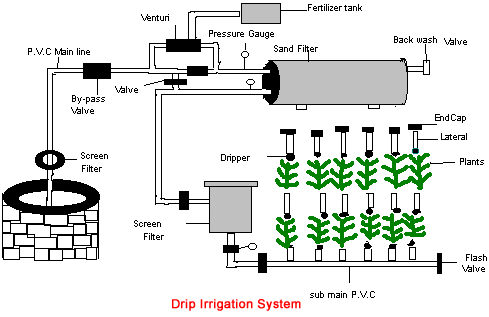
Tomatoes have been observed to withdraw water from depths up to 13 feet in a well structured soil. Tomato plants require adequate moisture throughout their growth period. First irrigation is required soon after seedlings are transplanted. Frequent water is necessary in root zone when plants are small. In summer irrigation at intervals of 3-4 days and 10-15 days water is necessary to maintain wet soil. Erratic moisture conditions can cause radial and concentric cracking on fruit.
Implements for Interculturing Operations
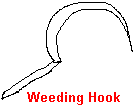 |
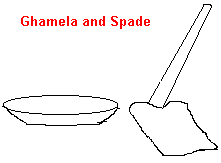 |
 |
Generally interculturing operations like hand hoeing, weeding, mulching, staking is followed in tomato. Implements like hand-hoe, khurpi, land leveller etc. are used.
Pre-emergence applications of herbicides like metribuzin at 0.35 kg/ha, fluchloralin 1.25 kg/ha has been found effective to increase the tomato yield significantly in comparison to traditional method of hand weeding. Also plastic mulching (black or transparent) can be used to control the weeds. Weeds can be controlled successfully by mulching plus use of herbicides (pendimethalin @ 0.75kg ai/ha or oxyflorophen @ 0.12kg ai/ha).
Spraying of PCPA at 50 ppm, IAA at 50 ppm or borax 1% gave the fruit set in summer season. PCPA spray at flowering stage was observed to create favorable conditions for fruit set in low as well as high temperatures.
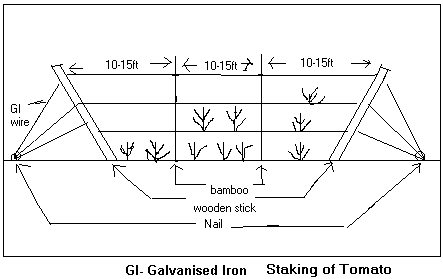
Due to staking there is better growth of tomato plant and branches, increased fruit bearing, and improved quality of fruits. Cultural operations like fruit picking, spraying, weeding, fertilisers application and earthing up etc. for staking can be done by two methods. In first type, at each plant sticks of 1.5-2meter length and 2.5cm thickness are placed and plant of tomato is staked as it is growing. In second type, a network of wire and bamboo is form and with the help of sutali (small rope) branches of plant is spread. Secondary branches should be cut upto 30 cm and from 30 cm height keeping two main branches plant should be allow to spread on this network.
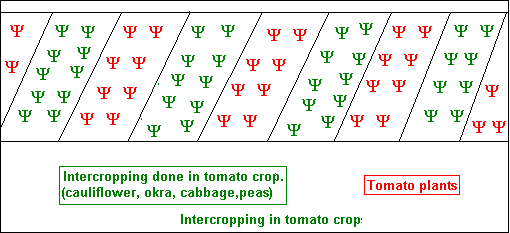
Tomato is well fitted in different cropping systems of cereals, grains, pulses and oilseeds. Cropping systems rice-tomato, rice-maize, okra-potato-tomato, tomato-onion are popular in various parts of India. Cauliflower- okra –sunflower –cabbage –tomato –maize -tomato-watermelon and paddy-peas-tomato have been proved economical systems. Palak or radish can be grown as inter-crop in tomato successfully.
Following are the few major pest of tomato :
Control measures of tomato pest is given as below: -
- Leaf eating caterpillar
Control measure
Spraying of cypernethrin at the rate of 3-4 ml or for Phosphamidon (85 SL) 5 ml per 10 litre of water at the interval of 8-10 days.
Control measure
Spraying of monocrotophos (36 SL) 5 ml/ 10 litre of water at the interval of 8-10 days.
Trichograma and campoletic cloride as a predator and heliocil as biological control.
It can be control by spraying dimethoate (30 E.C.) 10 ml/10 litre of water.
The controls vary from state to state and region to region. The local agricultural chemical manual will list controls and rates for each pest.
- Tomato fruit eating catre piller/tomato fruit borer
- Aphids
Fungicides / Incidence of diseases
Following are the diseases of tomato, which control by following methods of fungicide application: -
|
Disease |
Symptoms |
Fungicide |
Method of application |
|
Anthracnose (Colletotrichum phomoides) |
Recognized by its sunken spots on the fruit |
Rotation is the major control for this disease.
|
- |
|
Bacterial fruit spot |
On leaves small, water soaked, brown spots appear on the older leaflets. Under favourable conditions these spots may coalesce to form dark streaks. The affected leaves turn yellow and blighting of the foliage may take place. |
Streptocycline (100PPm) or copper fungicides |
Spraying |
|
Tomato leaf curl |
Leaf curl disease is characterized by severe stunting of the plants with downward rolling and crinkling of the leaves. The newly emerging leaves exhibit slight yellow colouration and later they also show curling symptoms, older leaves become leathery and brittle. |
Disease is transmitted by whitefly hence to check the whitefly population use insecticides fuadan or disyston @1kg ai/ha. |
Soil application, treating the nursery beds with granular insecticides. |
|
Tomato big bud |
The youngest fruit truss, instead of becoming recurved as in normal plants, assumes an upright position. The buds on the truss also point in a vertical direction, the calyx segments remain united almost to the tips, and the whole calyx enlarges to a form like a bladder with a toothed opening at the top. |
Metasystox (0.02%) or nuvacron (0.05%) at ten days intervals to control the insect vector (leaf hopper) population. |
Spraying |
|
Early blight |
On established plants, dark brown spots with concentric rings develop first on old leaves. Spotted leaves die prematurely leading to early defoliation. |
Mancozeb @ 0.2% |
Foliar spray |
|
Late blight |
Leaves and fruits are affected. Irregular greasy greyish areas develop on leaves. Under moist conditions these areas expand rapidly and a white downy growth appears on the lower surface of the affected leaves. Affected leaf dries and shrivels quickly. |
Mancozeb @ 0.2% |
Foliar spray |
|
Septoria leaf spot |
Appearance of numerous, small, grey coloured circular leaf spots with dark margin is the characteristic symptom of the disease. |
Mancozeb @2 g/kg. 0.2% Dithane Z-78 |
Seed treatment Foliar spraying |
|
Leaf mould/black mould |
It is recognized by the presence of a yellowish area on the upper leaf surface with brown mouldy growth on the lower surface. As the lesions develop, the leaves wilt and die. |
Mancozeb @ 0.2% |
Foliar spray |
|
Wilt |
It is characterized by yellowing and wilting of leaves and finally the entire plant wilts and dies prematurely. Often the stem tissue is discoloured throughout the plant. |
0.1% carbendazim or benomyl |
Soil drenching |
|
Powdery mildew |
A white talcum like covering on the lower surface of the leaves while the corresponding upper surface turns yellow. Premature dropping of infected leaves are common. |
Dinocap at 0.1% or Wet sulphur at 0.2% |
Spraying |
|
Bacterial wilt |
Infected plant parts when cut and immersed in clear water, a white streak of bacterial ooze coming out from the cut ends is visible. |
Streptocycline (1g/40 lit) Bleaching powder @ 15 kg/ha. |
Seed treatment for 30 min. Dusting/soil application. |
(Caution:-This is a general information and you are requested to read the product information carefully before use and you should consult a expert if you have any doubt or questions.)
The harvest of tomatoes is dependent on the closeness to the market. Stages of tomato harvesting: -
- Mature green fruit:- Fruits are bulk packed in ventilated containers for shipment. Those picked to be shipped are picked at the mature green stage and sprayed with ethylene 48 hours prior to shipping. Immature green tomatoes will ripen poorly and be of low quality. However, tomatoes harvested at the mature green stage will ripen into a product indiscernible from vine-ripened fruit. A simple way to determine maturity is to slice the tomato with a sharp knife. If seeds are cut, the fruit is too immature for harvest and will not ripen properly.
- Pink colour fruits :- For Local sale of tomatoes may be vine ripened to a firm ripe or a full red color before harvesting.
- Vine-ripened tomatoes should be harvested at the breaker stage to ensure the best quality. Fruit at the breaker stage, which have some interlocular gel and a pinkish red color on the inside, are sure to be mature. Such fruit can be handled and shipped better than that which has more color, and it will often bring a higher price than less mature tomatoes. If tomatoes are to be vine-ripened, fields should be harvested often and thoroughly to narrow the range of ripeness.
- Fully ripe:- Processing tomatoes are picked fully ripe.
Harvesting every day may be desirable during the peak of the season. Remove all diseased, misshapen, and otherwise cull tomatoes from the vines as soon as they are discovered. Remove discarded tomatoes from the field to avoid the spread and buildup of diseases and insect pests.
Tomatoes are highly perishable in nature hence quick means of transportation is necessary. Tomatoes are transported by road through tractors, trucks and also by rail and air to distant markets. Village produce is transported to the near by towns and city market only by road. The cargo services are also available for transportation. Processed tomatoes are having high export potential hence transported to different countries like USA, Saudi Arabia and Japan etc.
